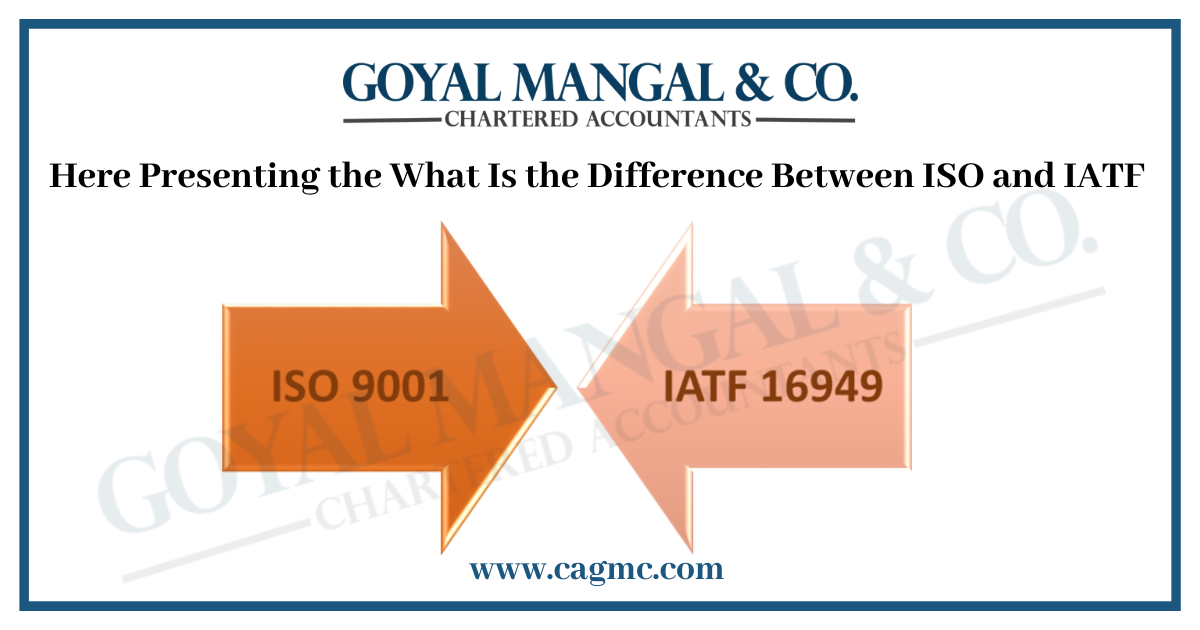
The ISO and IATF are prominent acronyms for quality management systems. These two play a significant role in making sure the goods and services are quality, however, they are not the same. Both have distinctive purposes, recognition and influential areas. In the current article, we will find out the what is the difference between ISO and IATF. Thus, let’s embark on the journey of these two phenomena of quality management systems apart from each other.
Table of Content
What do you mean by ISO?
(ISO) International Organization for Standardization is a non-governmental and independent international organization, which improves and publishes a wide range of voluntary international standards. Standards of these kinds include several aspects of goods, systems, and services. Along with a main target of efficiency, safety, ensuring quality, and interoperability among various sectors and industries.
The standards of ISO give a common language and structure for organizations worldwide. It helps them fulfil particular quality and safety needs, grow overall performance, and streamline processes. These are diverse such as healthcare, management in environmental areas, manufacturing, information technology and many more. Certification of ISO is mainly pursued by organizations to determine their commitment to stick to these international identification standards. That can enhance their competitiveness, credibility, and capability to be involved in world trade.
What is IATF?
IATF’s full form is the International Automotive Task Force. It is a group of manufacturers for automotive and their respective trade associations found for growth and maintain a common establishment of quality management system (QMS) standards particular to the automotive industry.
ITAF is developed a most well-known development is known as ITAF 16949. It is titled “Quality Management System for Automotive Production and Relevant Service Part Organizations.” ITAF 16949 is dependent on ISO 900, however, involves additional automotive industry needs. It is mainly identified and adopted by automotive Original Equipment Manufacturers (OEMs), and their supplied means to ensure the continuous safety, quality, and performance in the production of vehicles and automotive elements.
Difference between ISO 9001 and IATF 16949
Here is a tabular form of ISO 9001 and IATF 16949 difference:
| S. No. | Particulars | ISO 9001 | IATF 16949 |
|
|
Purpose | It is focused on consistency in development and satisfaction of consumers. It comes under the general quality management system. | It is an industrial-specific quality management standard. The purpose is to make sure the goods and processed continuously in the automotive supply chain. |
|
|
Scope | Its scope is to apply to a wide range of sectors and industries. | It is mainly designed for the automotive industry. Such as manufacturers and their suppliers. |
|
|
Necessary needs | It emphasized general quality principles like leadership, focus on consumers and development procedures. | Mainly for automotive industry elements such as failure mode, production part approval process (PPAP), control plans and FMEA. It also includes ISO 9001 requirements. |
|
|
Applicability | It is suitable for entities across several industries like services, manufacturing and more. | It applies to automotive production and relevant services sections of entities. |
|
|
Process control and improvement | It promotes process improvement and control but is not as prescriptive as IATF 16949 in this content. | It gives particular instructions on process control and development techniques tailored for automotive production. |
|
|
Consumer focus | It focuses on consumer satisfaction and meeting their needs. | It places a strong focus on fulfilling the unique quality and safety needs of automotive original Equipment Manufacturing (OEMs). |
|
|
Needs of Industrial specific | It does not involve the specific automotive needs. | It involves the industrial-specific needs of the development and design, goods safety and production. |
|
|
Management of Risk | It involves, but not as much as IATF 16949. | It is strongly on risk-based thinking and needs particular risk management performances. |
|
|
Expectations of supplier quality | Certification of ISO 9001 may be adopted by some automotive OEMs, however, need additional automotive for particular assessments. | IATF 16949 is mainly needed by automotive OEMs to ensure consistency in quality by the supply chain. |
|
|
Certification | Organizations may obtain ISO 9001 certification to ensure compliance with general principles of quality management. | Automotive manufacturing and suppliers mainly look for IATF 16949 certification to meet industrial particulars in quality needs. |
Conclusion
Through the study, we can say that IATF is the driving force behind the careful quality needs mainly tailored for the industry of automotive. On the other side ISO with its huge range of applicability, provides a crucial structure for organizations across several industries to support quality and compliance standards. Knowing the ISO 9001 and IATF 16949 differences between of these two is significant for businesses aiming to attain compliance and excellence in their respective domains.







